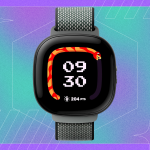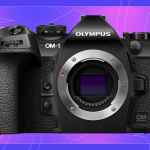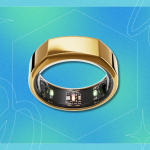Apple’s sixth-generation iPad Pro is a simple affair: It’s almost entirely the same as last year’s iPad Pro, with one key difference: Apple’s new M2 processor. It’s powerful and great to use as a tablet, but it’s still far from becoming a truly versatile laptop replacement.
It’s all about the M2 and iPadOS 16
The sixth-gen 12.9-inch iPad Pro, which Apple sent me to review last week, is near identical to the fifth-gen iPad Pro in many key aspects. It has the same design, display, cameras, speakers, and battery. It’s exactly the same size and weight. It even has a Nano-SIM slot, just like last year’s iPad Pro, even though Apple has gone SIM-less on its new iPhone 14. It comes with the same storage options, ranging from 128GB all the way up to 2TB. It once again comes in the Space Gray and Silver colors. It supports the exact same accessories, and Apple hasn’t launched any new ones, for now.
This is not an upgrade for people who want to flaunt their brand new iPad Pro. The major changes are the M2 processor and – if you really stretch the term “major” – support for Apple Pencil hover, the tech that makes the tablet’s display sense the proximity of Pencil and perform a simple task before you even touch it.
Credit: Stan Schroeder/Mashable
Sure, you can go hunting for other differences between the old and the new Pro, but you’ll have to dig in deep, and you’ll find few of them. Here are a couple that I’ve noticed:
The new iPad Pro models now have a sign saying “iPad Pro” on the back. Earlier iPad Pro models merely said “iPad”
The antenna lines on the back appear to be a little less visible than before, especially on the Space Gray variant
The rear camera now supports ProRes recording up to 4K at 30fps, and the front camera now supports Smart HDR 4 for photos (the old iPad Pro’s front camera only supports Smart HDR 3)
Wi-Fi has been upgraded from Wi-Fi 6 to the faster, Wi-Fi 6E standard
That’s pretty much it. For all of the basic aspects of the 12.9-inch iPad Pro – its design, display, battery life, and cameras – I will point you to our last year’s review of the 5th-generation, 12.9-inch iPad Pro. It’s still a stunningly beautiful device with a near-perfect display that’s truly a joy to use, though due to its massive size, it works better on the table than in your lap.
However, it’s high time Apple changed something – anything – about the iPad Pro’s design, because three generations of virtually no changes is too much. And if I may offer a suggestion, maybe move the front camera to the side of the device instead of it being on top. You’ll rarely do video calls in portrait mode, so having the camera up top and in the center when in landscape mode makes a lot more sense.
Almost too powerful
The new iPad Pro is powered by Apple’s M2 chip. That chip is good enough to power Apple’s MacBook Air and the 13-inch MacBook Pro, so the new iPad Pro is basically in the same league as these very capable laptops. Another key aspect is the new iPadOS 16, which launched alongside the new iPads.
My job here, then, was to focus on how well the new iPad Pro performs in tandem with the new iPadOS 16. I’m happy to report that the Pro easily handled everything I threw at it.
In most cases, that meant having a bunch of browser tabs and apps such as Apple Music, Facebook, and YouTube open, and flipping between them all the time. I never experienced a slowdown. Fooling around in GarageBand was a joy on the 12.9-inch display, and the app performed without a hitch.
I also played a few games, including PUBG and Hearthstone (both of which look gorgeous on the iPad Pro’s massive display), and the iPad Pro didn’t even get very warm. It’s a powerful device, but you will only reach the limits of that power in specific, extremely demanding apps, and realistically, very few people use such apps.
When it comes to battery life, it really, really depends on how you use the iPad. If you put it on your table and do real work on it for eight hours, the battery might drain before the end of your day (reducing the brightness helps a lot, though). If you use the device occasionally and for typical tablet tasks, such as hanging out on Slack, reading books and magazines, and doomscrolling through your social media poison of choice, it will last for days. I did a mix of both and the iPad had about 20 percent left at the end of the day.
Look, no touching
Besides the M2 chip, the two other improvements worth mentioning are Pencil hover and support for Wi-Fi 6e. Hover is one of those magical things that Apple does that you just have to show to your friends. The iPad Pro’s display senses when the tip of the Apple Pencil is about 12 millimetres away, and – in certain scenarios – does a little something, like highlighting the item you were about to tap on, or expanding the text input field you’re about to touch. I’m no heavy Pencil user, so I cannot say how useful this really is, but it’s definitely a cool party trick.
Credit: Stan Schroeder/Mashable
I wasn’t able to test the Wi-Fi 6e as I lacked the proper router, but it boils down to faster Wi-Fi connectivity with lower latencies. I’m sure that there are some iPad users out there who require super-fast wireless connection, but for most people it’s just another one of those “nice to have” features.
Is the new iPad Pro finally good enough to be your primary computer?
As for whether the new iPad Pro, when combined with Apple’s Magic Keyboard, can fully replace your computer, the answer is probably not. If you want to give it a try, you’ll have to be willing to learn new things, make a lot of compromises, and it’ll still heavily depend on what your daily workflow looks like.
To do my daily work on the iPad Pro, I had to learn some keyboard shortcuts (CMD+W to close a tab or window was a lifesaver), get used to using gestures on the Magic Keyboard’s tiny trackpad, and mess about with settings a lot until I got to an experience that’s close to what I get on the MacBook.
Even then, I could never fully get that comfort that I get when working with a laptop.
Credit: Stan Schroeder/Mashable
Apple’s new Stage Manager, which is finally live for everyone with iPadOS 16, helps with multitasking, and I don’t hate it – for example, I love the way I can pile up certain apps into groups that I can fetch at will. But it still has limitations in what you can do with apps on your screen. For example, I like to have two browser instances open side by side, and on the iPad Pro, I could not precisely set the display resolution I wanted, nor could I have resized the windows to the exact size I wanted.
Stage Manager was also buggy. For example, invoking it with the Keyboard’s trackpad, which you do by moving the cursor to the left of the display, occasionally wouldn’t work. Some apps, including Facebook and Apple’s own Weather (which is new to the iPad) would sometimes look messy when resized inside Stage Manager. Having the app windows stubbornly cling to a certain size when you need them to be just a little bit bigger or smaller is annoying. I do think it’s better than both Slide Over and Split View as a multitasking tool, but it’s still far from perfect.
Featured Video For You
Notably, Apple launched a new Magic Keyboard for the new iPad, with an additional row of function keys and an escape key in the top row. The iPad Pro, on the other hand, still gets the same old Magic Keyboard that lacks the top row of keys, and it’s a pity, because the new version is better. Hopefully, Apple will update the Magic Keyboard for the iPad Pro in the (near) future.
The result of all this, for me, was that I yearned to go back to working on my Mac. The iPad Pro had its moments; for example, simply lifting the tablet out of its cradle and taking it to continue my work on the sofa was a joy. Being able to quickly go to portrait mode and see a longer web page in its entirety was similarly great. But overall, the advantages I got weren’t enough to offset the drawbacks.
I can imagine some people using the iPad Pro as their main workhorse; perhaps someone that works with specific apps that are highly optimized for the iPad, or an artist who uses the Apple Pencil a lot, or someone who benefits from being able to easily hand over the iPad to someone else (like a doctor showing a digital X-ray to a patient). But for most people, the iPad Pro will do better as a secondary device which you pick up when you want to do tablet things.
Still a niche product
Credit: Stan Schroeder/Mashable
It’s hard to be critical of the iPad Pro. It’s a beautiful device with a stunning display, very powerful chip, and great battery life. It feels like the future – but it’s ultimately still not as practical as your computer for work tasks. With a price that starts at $1,099, plus $349 for the Magic Keyboard (which is a must if you plan to use the iPad for work), it’s more expensive than the $1,299 MacBook Pro. Unless you absolutely must have a touchscreen, you’ll probably be better off with a Mac.
All of this was true when last year’s 5th-gen iPad Pro came out. This year, the changes are minuscule, with one big exception: Apple’s new M2 chip. But the chip, while very powerful, doesn’t change a thing about how well the iPad Pro performs as a laptop replacement. If you have last year’s iPad Pro, there’s no reason to upgrade unless you really need that extra power, and that, I assume, only applies to a handful of professionals that need the Pro for very specific tasks.
If you’re a first time buyer, and just want an Apple tablet (or you’re upgrading from another, smaller tablet), consider the size. The 12.9-inch display is the best I’ve ever seen on any portable device, but it does make the device large and far more unwieldy than, say, the 11-inch iPad Pro or iPad Air. It’s a tradeoff that might make sense in the store, but it could fire back after a few weeks or months of use.
The iPad Pro, especially in its 12.9-inch version, has truly become a device for professionals. If you need it, you already know why you need it, and given that it basically has no competition, you’ll put up with its drawbacks. You may also want it because it’s simply Apple’s most powerful, largest, and most gorgeous iPad. But when it comes to value for money, you’ll probably do better to consider an iPad Air.







